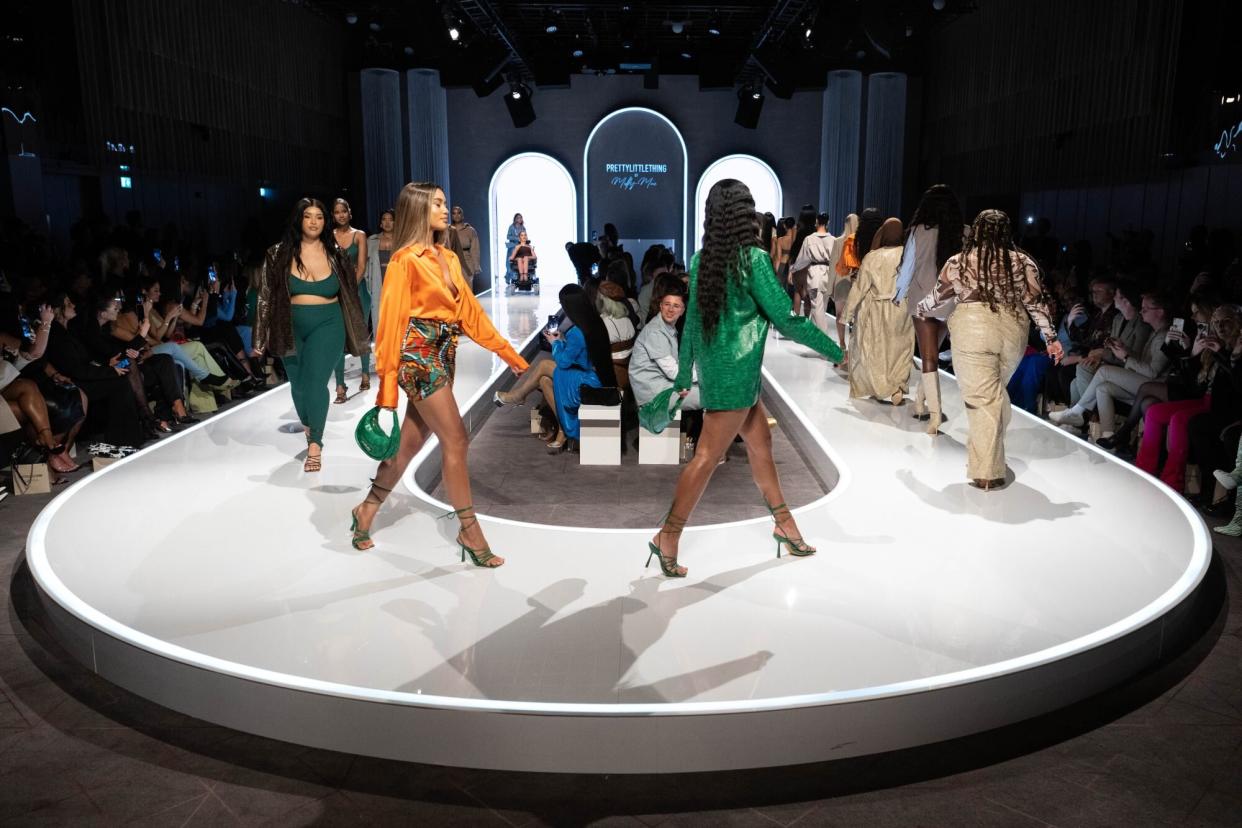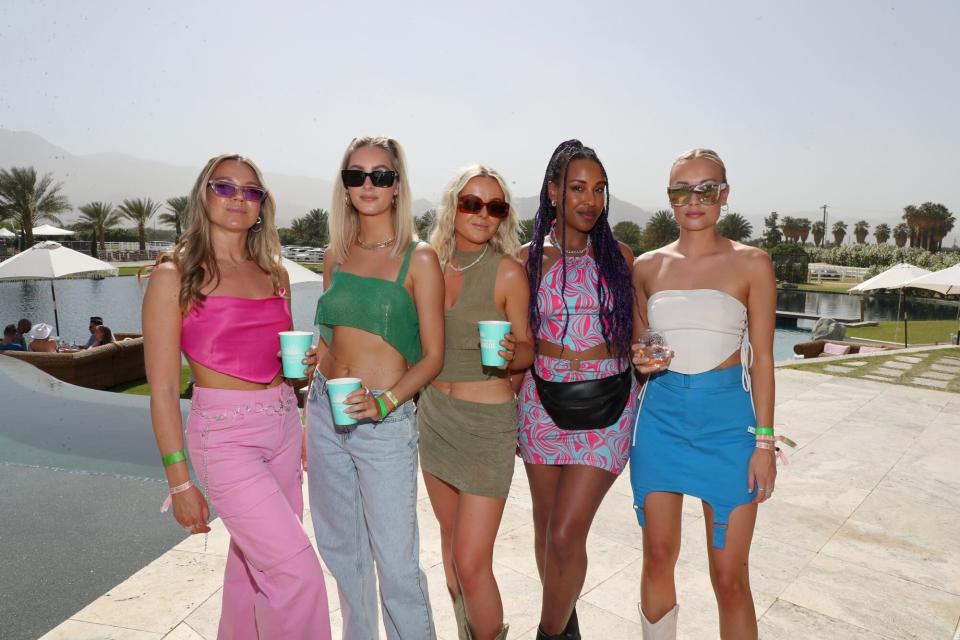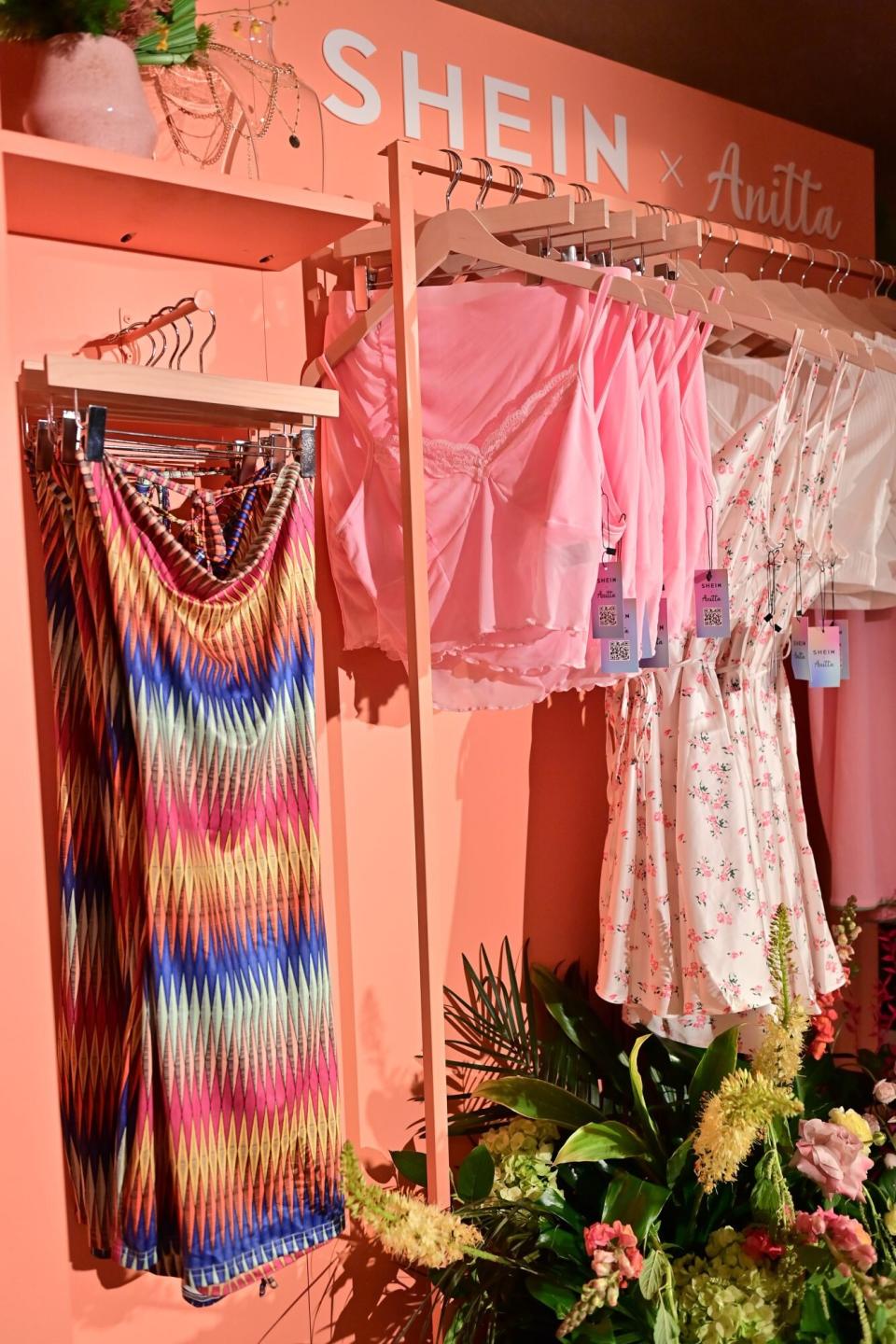Fast Fashion Is Not Slowing Down — It's Evolving

Jeff Spicer/Getty Images
At this point, the myth that fast fashion has been "killed" by Gen Z has been exhaustingly dispelled. Several reports over the past year — including this one from Vox, this one from Dazed, and this one from The Guardian — have pointed out that, while the generation born between 1997 and 2012 may be more conscious of climate change, and do love to sell and buy on resale websites, they also enjoy shopping for clothing on fast fashion sites like Shein, Cider and FashioNova.
Other generations are fans of fast fashion as well. Even as Millenials became adults with presumably more income than they had as teens, they've continued filling their wardrobe with pieces from prominent retailers, like Zara and H&M. Gen X and Boomers are also why the apparel industry is growing right now — and yes, they buy fast fashion too. Even celebrities and TV characters have been wearing Boohoo, PrettyLittleThing, and Edikted more often, likely influencing people to copy their style to shop their exact looks.
RELATED: Let's Stop Pretending We Need New Clothes Every Season
That's not to say the fast fashion industry hasn't taken some hits. In 2019, Forever 21, once a giant of the super quick and cheap trends in fashion, declared Chapter 11 bankruptcy. In 2020, several brands, including H&M and Zara, all reported losses. But by 2021, they were right back to where they started. H&M reported a 25% growth, while Inditex, which owns Zara, claimed the profits doubled and Mango saw profits soar to the highest they have been in over a decade.
So yes, despite a global pandemic and heightened awareness of fashion's impact on the planet, every sign points to one thing: fast fashion is here to say.

Getty Images Guests attend a PrettyLittleThing event.
It's a disheartening thought, especially when you consider the interest in sustainable and alternative fashion over the last five years. Resale sites like ThredUp and Poshmark are booming and, according to data published by Mercari and GlobalData, are expected to grow by 153% to $353.9 billion by 2030. On almost every social media platform, there are millions of videos and posts about the waste problems caused by the thousands of designs sold by fast fashion brands each month. Activist organizations have gained traction through campaigns that bring awareness to labor violations that happen throughout the supply, particularly in factories contracted by fast fashion brands.
And yet, in 2022, fast fashion is not just alive and well. It's growing. So, what's the deal?
Fast fashion brands are as big and profitable as they are because adapting to the market is the whole idea. Most of them were built to meet the demands of consumers who were looking to access trends at lower costs toward the end of the 20th century. And as social media grew, so did this need to keep up with trends. Fast fashion was tuned in and there to help.
In the last two years, newcomer brands — specifically, China-based, ultra-fast fashion brand Shein — have developed technologies to support an even younger shopper. Shein uses an advanced system to track trends and create smaller amounts of each style. In 2021, Beijing-based reporter Matthew Brennan told Vox, "Compared to its fast-fashion competitors, Shein is able to take more bets, but at a lower risk. It's able to place very small initial orders with these factories, about 100 or even smaller." This is why you see advertisements from the brand boasting "1,000 new items a week." It's also why there have been so many accusations from small designers who say their ideas have been stolen and replicated for cheap.
For the record, Shein is said to be raising $1 billion at a $100 billion valuation.

Getty Images
Essentially, fast fashion brands aren't just responding to social media's ever-spinning push for newer and more content; they are creating the demand by giving us exactly what we want at the click of a button. However, you can't have clothing this fast and cheap without some sacrifices. Usually, it's the quality of the garments and the workers who make them that take the hit. It's a tale as old as corporate greed-laden time.
On a decidedly more sinister side, some fast fashion brands are evolving through another type of trend. Many began to recognize the push toward activism in fashion and have successfully cashed in on it. ResearchGate released a report in March where they polled 1,000 people in the UK and asked them which brands they felt were the most sustainable. Among the top five were H&M, Amazon, and Primark. All three brands are considered fast fashion, and despite small collections that have more eco-friendly materials or recycling programs, none have made an effort to produce less clothing. That's a big issue, since the amount of clothing being made is what makes fast fashion so problematic in the first place. By using the language of sustainability to sell clothes, brands are doing exactly the opposite of what they're saying. It's just continuing the cycle of pushing trends and disposable clothing.
RELATED: If Your Sustainable Fashion Doesn't Announce Itself, Does it Count?
While we can all take some responsibility for our consumption habits, the growth of fast fashion is not the fault of people buying the clothing. Fast fashion was invented to cash in on our changing behaviors, so when brands see that we care a little more about equality yet also want our trends fast and cheap, they cater to that. They've also been able to get away with sourcing cheap materials, stealing popular designs, and paying low wages for decades because it hasn't been regulated in any real way that will impact profits. As long as all of this continues, it seems like fast fashion will continue on the path that it's already on — exponential growth.

